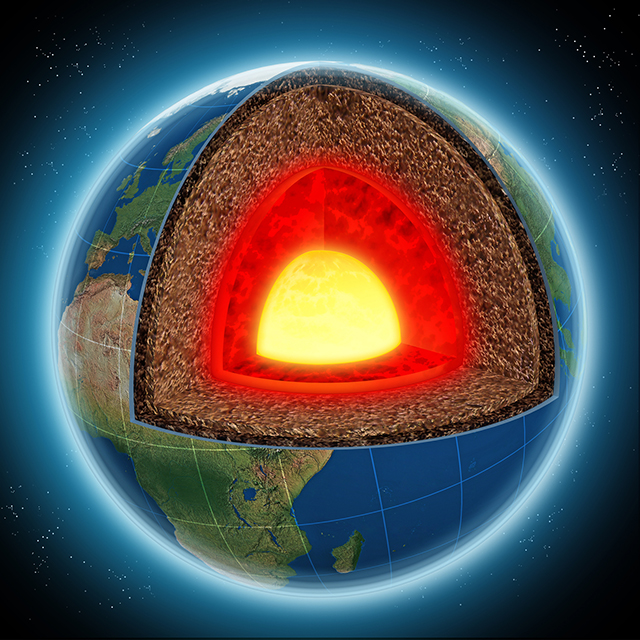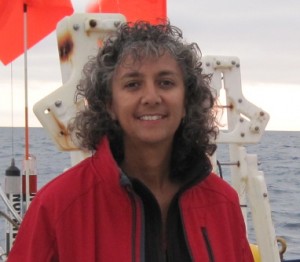CSUN Professor Explains the State of Earth’s Core Rotation

CSUN geological sciences professor Dayanthie Weeraratne offered some insight into what is currently known about Earth’s rotation amid news that the planet’s core changing course. Photo by adventtr, iStock.
It has long been believed that all three layers of the Earth’s core have shared in the planet’s rotation, until earlier this year, when a recently published study provided evidence to show that the rotation of the inner core may have changed or even stopped.
As news about the Earth’s core changing its course continues to raise questions, California State University, Northridge geological sciences professor Dayanthie Weeraratne offered some insight into what is currently known about the planet’s rotation.

Dayanthie Weeraratne
Weeraratne said it is important for people to remember that the Earth’s interior is made of three known layers: a rocky mantle, an outer core and an inner core.
“The mantle consists of olivine — a beautiful green crystal and other silicates,” she said. “The outer core is filled with molten hot liquid iron that circulates daily, similarly to the viscosity of one’s morning coffee; and the inner core is a solid iron sphere that rotates in the midst of the outer liquid core.”
When the planet was created some 4.5 billion years ago, the entire core was in a liquid state, similar to that of melted chocolate. At this time, she said, the Earth was experiencing a multitude of volcanic eruptions, causing the Earth’s surface to be unbearably hot, and is one of the reasons why there is so much oxygen in Earth’s atmosphere compared to other planets located in our sun’s orbit.
As the Earth began to cool, Weeraratne said, the liquid iron in that original core froze into crystals that floated to the center and gradually merged to form the inner core.
Weeraratne is quick to point out that researchers cannot say for sure that the inner core has switched directions or stopped spinning completely.
“Although there is no definitive answer due to ongoing research, the newer study suggests that the [inner] core spins one degree slower every hundred years,” she explained.
But if it has changed or stopped, she said, this means that there could be some slight variation in the length of day that the world is accustomed to; shortened by a few more milliseconds than usual.
There is a relationship between the Earth’s inner core rotation and the outer liquid core’s circulation, she said, pointing out that the circulation of the outer, liquid iron core is what creates the magnetic field that encompasses the planet and helps protect people from excessive amounts of solar radiation.
If the magnetic field did not exist, Weeraratne said, people would suffer from extreme sunburns, potentially causing skin cancer rates to skyrocket. The magnetic field also is what creates the Aurora Borealis, otherwise known as the Northern Lights, which are bright curtains and patterns of green, blue, red and other bold hues.
As of now, the energy flows in the North Pole and out of the South Pole. But, roughly every 10 million years or so, the planet’s magnetic field flips directions. When this happens, the strength of the magnetic field decreases and then ceases completely. When there is no current flowing, the repetitive circulation of iron within the outer core is disturbed and just sits still.
This delay causes a decrease in strength regarding the Earth’s magnetic field, meaning it will have a harder time protecting the planet from powerful solar winds.
Weeraratne said not to worry, noting that this sudden decrease is not expected to happen for another 1,000 years.
Regardless, she said, “in about 90 billion years, beyond the life of our sun, all of the content in the inner and outer core will be frozen solid.”

 experience
experience